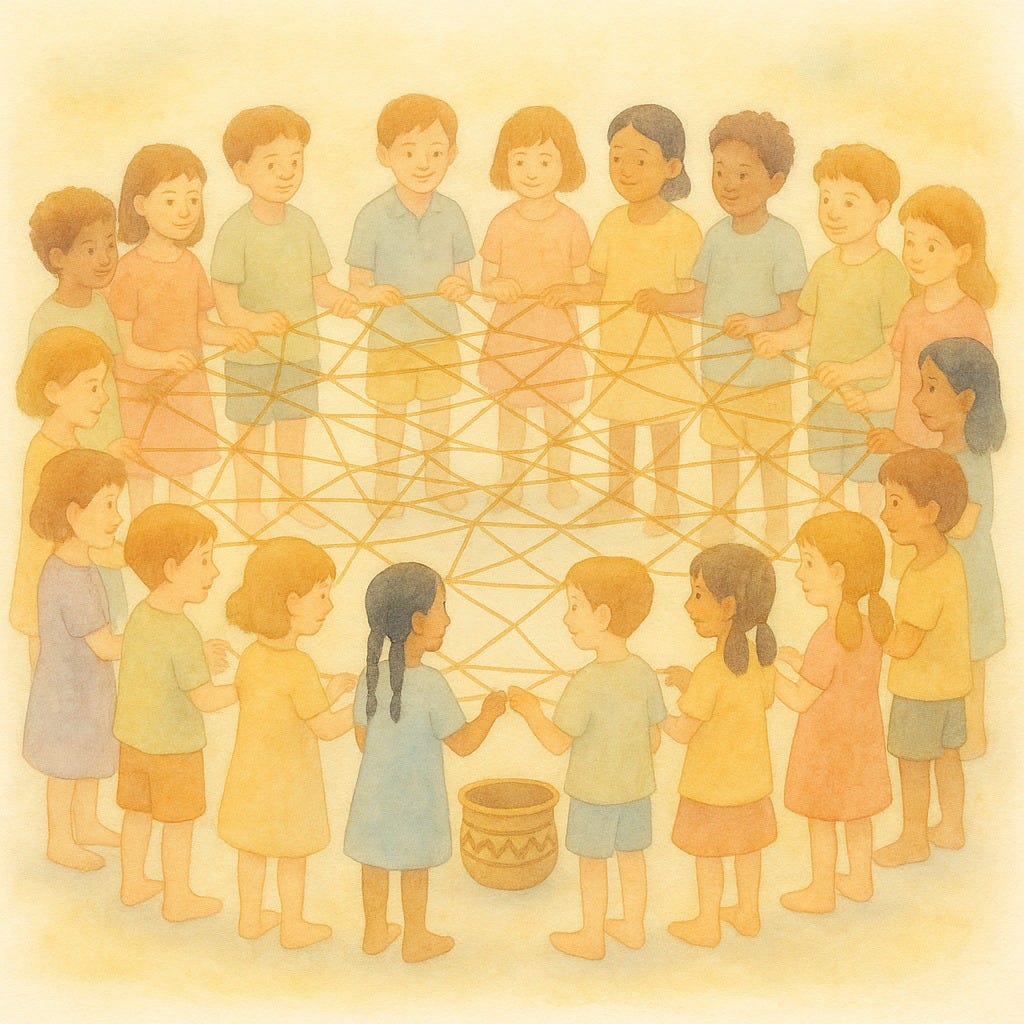Grassroots Economics in schools
What 9-Year-Olds classroom taught us about collective abundance
Last week, Will Ruddick and I were invited to teach a class of 9-year-olds in Southern Spain about resource coordination and collective abundance. We weren’t sure what to expect but, what unfolded was one of the most moving and affirming experiences I’ve ever had.
We chose to follow the visionary approach taught by the Uganda Rural Development Training Program, a method rooted in helping people see themselves as part of a community capable of realizing their dreams together. It’s a pedagogy that doesn’t impose answers but opens space for shared imagination.
Each child received a full piece of paper and was invited to close their eyes and imagine a beautiful future for their community. Who was there? What were they doing? How did it feel? They had five quiet minutes to sketch what they saw.
Next, we asked them to write down something they could offer or help with, a gesture, a skill, an action from the heart. Then we all stepped outside where we formed a circle. One by one, the children described their drawings and shared their offerings, placing both into a communal basket at the center. We also brought out a spool of ribbon.
One child took the end, voiced their offering, and looked around. Whoever felt they could receive that offering raised a hand. The ribbon was gently tossed across the circle. The receiver then shared what they could offer in return, and passed the ribbon on. As the ribbon continued its journey, a web of reciprocity took shape, visible, tangible, playful. Laughter echoed. The circle came alive.
By the end, we laid the ribbon down carefully. We asked the children:
What could you accomplish if all this support was behind you? What if giving and receiving were how we build our world, every day?
I remember these intentions and dreams coming out : “Taking care of the ones who need it” “Taking care of endangered species” “Having people around us happy” “Travel the world with my best friend” “Cooking food with my mum to give food to others” …
Back in the classroom, we shared stories and images of Kenyan communities practicing rotational labor, seed sharing, mutual commitments. The children were amazed. One of them said, "They’re not poor, they have the whole village!"
That was the moment the deeper lesson landed:
True wealth is who comes when you ask for help.
This wasn’t just a school activity. It was a reminder of the world we already carry in our hearts: where abundance doesn’t mean having more, but being more together. Where every child’s vision matters. And where no one is alone in making their dream real.
For me, working with children in this way is not just heart work, it is essential. In times of uncertainty and ecological unraveling, sharing values of trust, collaboration, and intergenerational wisdom is a lifeline. It reconnects us to a kind of education that belongs to all of us, regardless of age. An education rooted not only in skills, but in relationships. In dignity. In possibility.
We believe that some kinds of learning should move across all ages and all settings, schools, homes, gardens, neighborhoods. They are the kinds of teachings that nourish the soul of a people.
The kinds that remind us:
We are all learners. We are all teachers. We are all in this together.









Incredible, what a beautiful truth in the center that the practice revealed. Love it! It is a breath of fresh air to read.
So beautiful 💖 I'd love to use this with adults too. Thank you for sharing 🙏